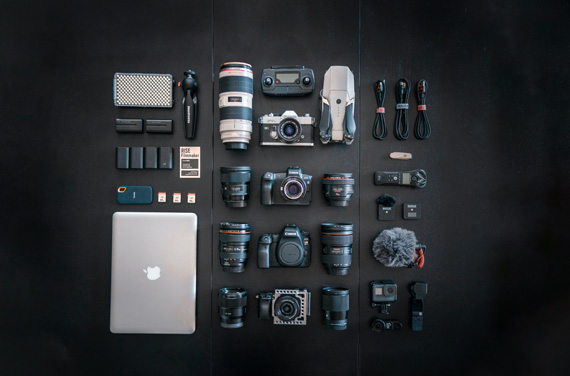Those new to the idea can be taken by surprise and even feel a little uncomfortable at the prospect of running a photography business. Their photography is now a product that needs to be sold. However, no one can run a successful photography studio in the long term if they persist with the idea of being primarily a photographer, while ignoring the necessary business aspects.

photo by JD Hascup
Professional Photography Is Fun, But It’s No Game
Despite the serious nature of the photography business, being a professional photographer can be fun, highly rewarding, and deeply satisfying in the creative sense. Unfortunately, too many new pro photographers treat their business like an easy game, which is the fastest path to a business meltdown and ultimate failure.
But how can an amateur photographer who does take this seriously actually make the leap to becoming a professional photographer?
Start With An Inventory
The first thing to do is to take a complete inventory of everything the photographer already has that can be used for the business:
- Cameras and lenses (both primary and backup)
- Lighting equipment (indoor studio and portable lighting)
- Backdrops, props, and stands
- Miscellaneous photographic and studio gear
- Computing equipment, software and hardware
- Office equipment and necessary supplies (for example, printers and ink)
- Physical studio space (rented or at home)

Photo by lucas Favre; ISO 800, f/4.0, 1/250s.
Most amateurs probably have many of these things to begin with, but it’s important not to get bogged down by the details. Instead, list the available resources as a starting point. There will undoubtedly be gaps that need to be filled. For example, backup cameras are critical for the wedding photographer; failure on someone’s wedding day is not an option!
With that said, this is no time to start shopping for all the latest and greatest gear! The idea that photographers must own the newest high dollar camera in order to be successful, for example, is a myth. The time to invest in better equipment is later on, when the business is generating sufficient revenue.
When making the jump from amateur to professional photographer there’s something far more important to invest in: business and marketing education.
Invest In Knowledge–Not Just Equipment
For some reason, business education is a difficult thing to persuade many photographers to invest in, but taking the time and effort to learn about running a business separates the wannabes from the truly dedicated professionals.
As soon as the photographer makes the decision to go pro, it’s the time to figure out where his or her personal strengths and weaknesses are with regard to business, accounting, marketing, and sales.

photo by Ronnie Macdonald
Of course, technical skills and a dedication to the art of photography are still important for creating a quality product, but skills and passion won’t matter if the photographer has very little idea of how to run a business.
The early days in starting a business are the time when the photographer is simply unaware of the things he or she needs to know, but doesn’t (in other words, “blind spots”). A better understanding of where photographers are in their personal business development is of critical importance.
Some areas to which most newcomers to the business should give serious thought include the following:
- Branding
- The importance of a positive business attitude and mindset
- Creating an attractive product range and price it accordingly
- Business communication skills–written and verbal
- Search engine optimization
- Persuasive copywriting
- Marketing know-how
- Building relationships with other businesses
- Sales techniques and overall confidence in selling
- Creating and maintaining positive client relationships
- Business administration, such as legal and accounting tasks

photo by Ufuk Sha Agun
Some of these may require extensive training, but education is perhaps one of the best investments to be made in any photography business.
Ultimately, the amateur-turned-professional photographer is now the CEO of a new business venture and should therefore approach the acquisition of knowledge and skills required to run the business in just the same way as any other serious business owner.
About the Author:
Nigel Merrick is a professional photographer, blogger and business coach for other working photographers. Nigel’s blog helps professional photographers find peace in their business, love from their clients, and happiness in their personal lives by clarifying their focus on business and marketing.
Like This Article?
Don't Miss The Next One!
Join over 100,000 photographers of all experience levels who receive our free photography tips and articles to stay current:






Thanks for this article.
I know how to run a business. I’ve been a criminal defense attorney in solo practice for almost a decade now.
But the idea of trying to get going as a photographer makes me wonder. Most of the equipment I have is better than what the photographers I know are able to acquire. (And I know how to use it — check out my website.)
Still, I bet they sleep better than I do. And I know that most of the time they have more fun. (I say “most” of the time, because I do photograph a lot of concerts!)
Who knows? Maybe one day I’ll get the joy of running my own studio.
In any event, thank you for this article, and the reminder that despite however much fun it might be, it will also still be “work.”